And one common way they smartly do that is by combining the age-old spring box with a corral-style enclosure. Here's how:
Find a spring seep on a hillside, or like. Dig a notch into it to focus the flow, and a basin to collect the water. Bury/anchor a screen-covered collection box, a "spring box," on the bottom of the basin. Attach a flexible pipe to the spring box (and vertical air vent), and route the pipe downhill to a nearby cattle trough or storage tank. Then enclose the area around the spring with wildlife-friendly fencing. Water fills up the pool, trickles through the filter into the box, then flows down the pipe to the trough/tank, where a toilet-style float valve is used to keep it full, yet stop wasteful overflow.
All the while, the seep, pool and border is protected from potential disturbance and damage by the heavy cattle, which are animals that like to stand around and wallow in water. And poop and pee in it, too. But hey - it's in their genes, so we can't fault them. Just engineer around it.
Benefits seen by enclosing springs:
- water flows longer and more consistently during season
- yield more water per year
- last more years w/o need to be re-developed
- keep water cleaner, healthier
And this simple, ingenious, practical solution also has amazing benefits to wildlife:
- more consistent water hole (and often where there wasn't one previously)
- ground-level pool that can be easily used by ground birds and small animals
- cattle-shy wildlife more likely to use water hole and reside in area
- water hole itself becomes ecosystem supporting biodiversity, including pest eaters, such as owls, frogs, toads and bats (eating mosquitoes, pine borers, oak moths, etc.)
In other words, the 'ole win-win.
To document some of these benefits, this past summer I set a cam trap on a recently developed spring enclosure on my fave conservation-caring cattle ranch the Tehachapi Mountains, to see what species were using it, and how often.
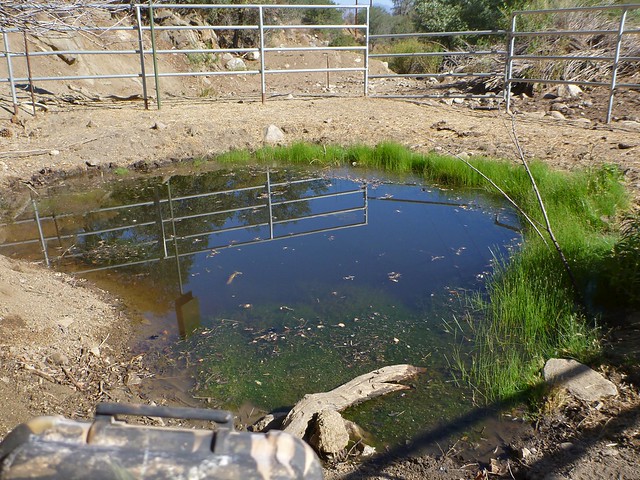
View over top of cam trap at enclosed spring pond - note the reflection of the bat roost box
Well, when I pulled the cam trap and saw the memory card had filled up with 724 photos in 3 days, I was sure the camera had false-triggered itself to death on stray sunbeams or like.
But I was wrong.
I had just underestimated how popular the water hole would be during summer.
Every single photo of the 724 has at least one animal in it coming for water.
30 species in total: 10 mammals, 17 birds and 3 herps.
And lots and lots of visits of most.
In 3 days.
Here are the mammals...
Three squirrel species frequented the water hole - California ground squirrels, western gray, and Merriam's chipmunks:

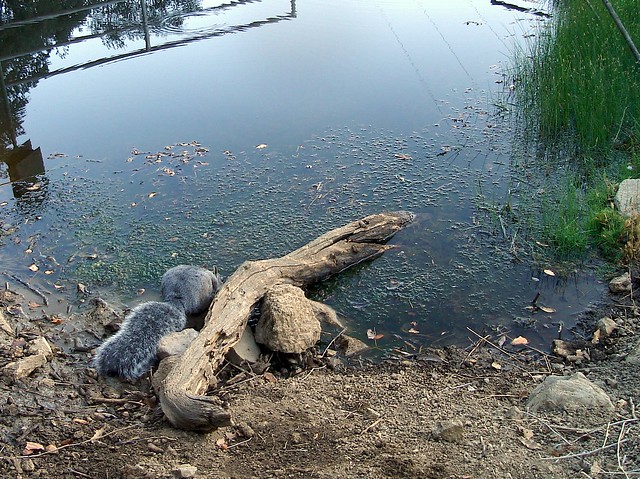

Many mule deer slipped in too. 10 separate visits, and at least 9 different individuals:
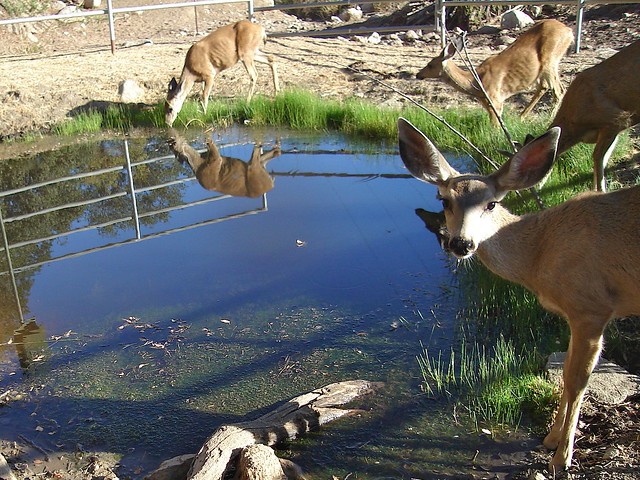


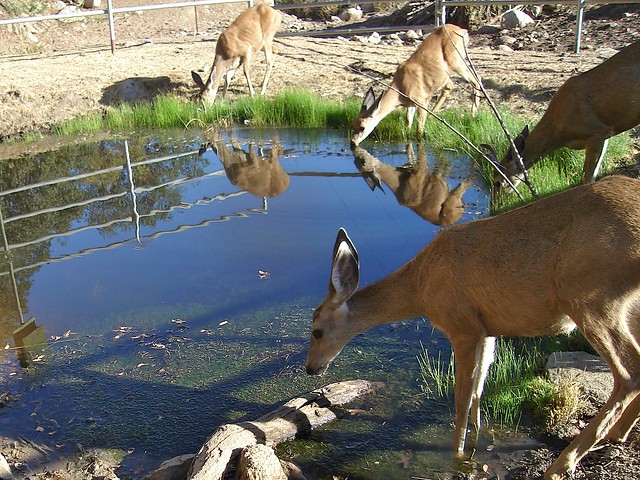
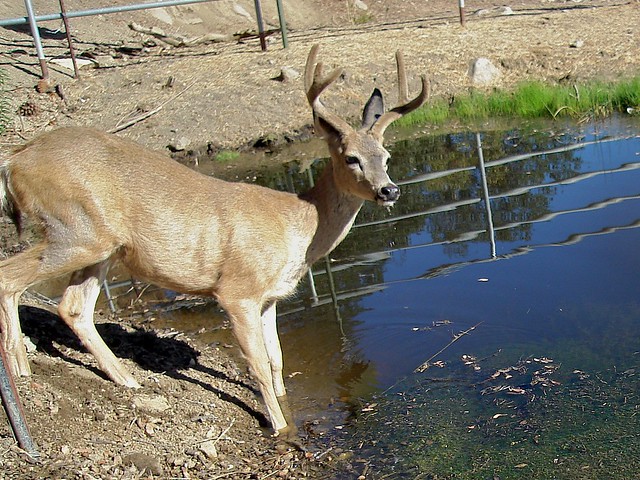
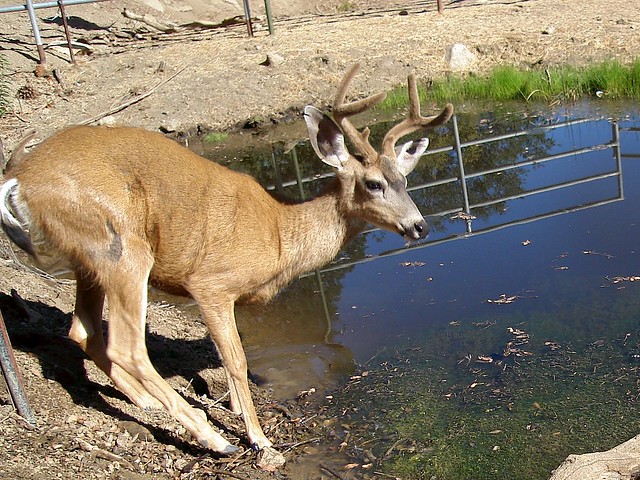
2 different bobcats, both males, visited 5 times:


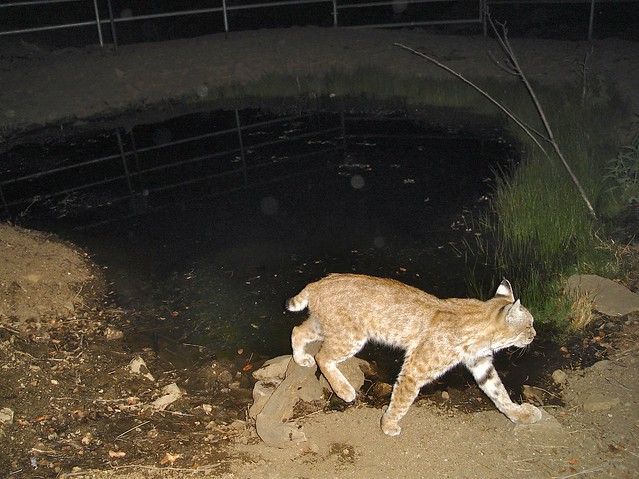
The 2nd bobcat came by during the day at 2:17pm:
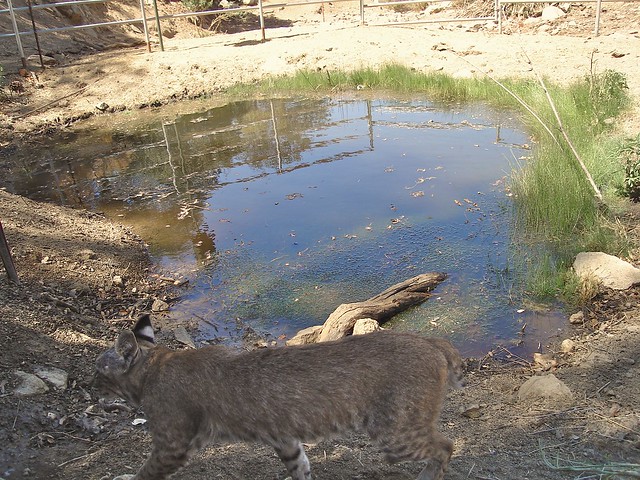

I think he hunkered down under the shrub by the camera trap, because the next photo of him leaving is 22 minutes later. To nap, or to ambush?
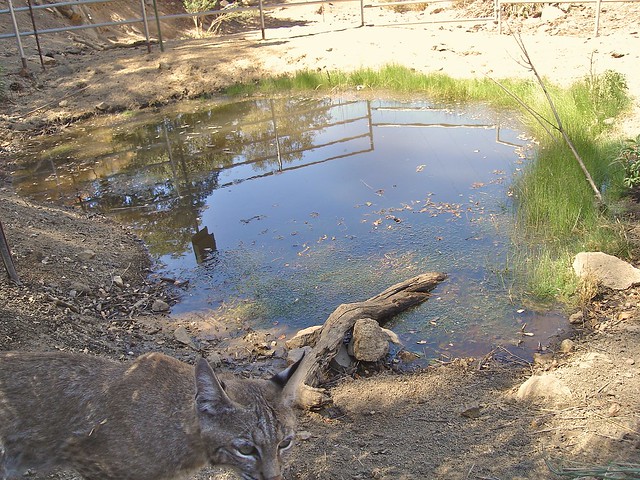
And it was this juvenile coyote that likely scared the boyo bob off, because the cat dashed just 1 minute before these cute photos of the bat-eared yote:

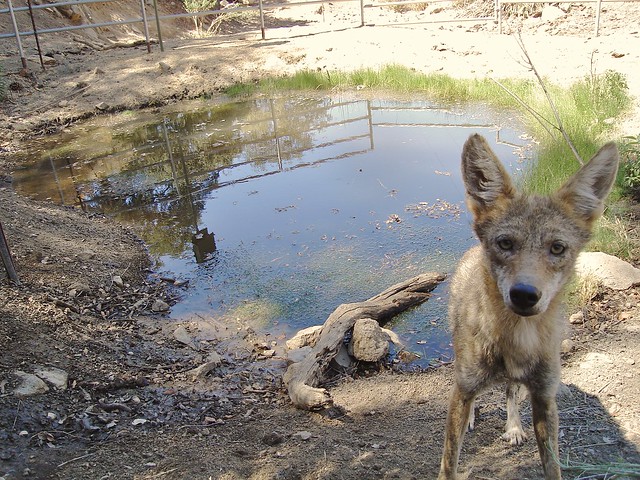
But bob returned the next afternoon. Giving the cam a glance askance:
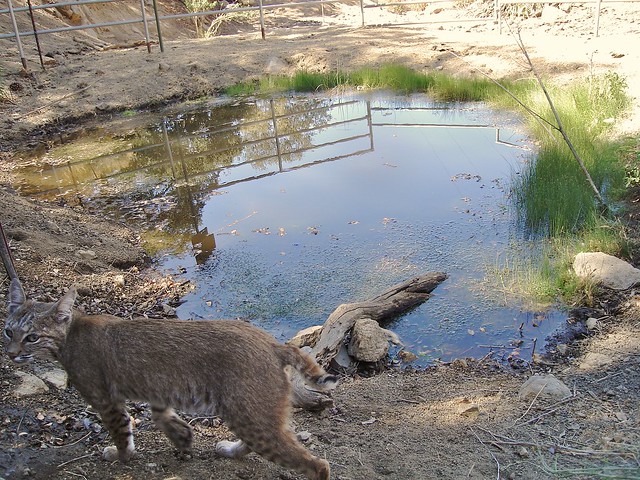
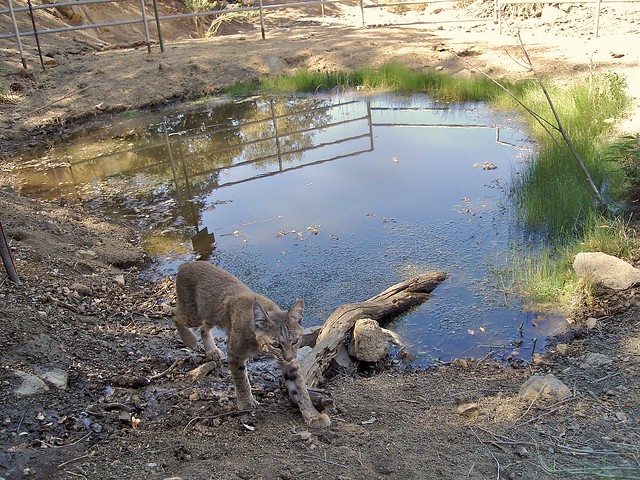
In the background of multiple shots, bats could be seen. In this case, likely a species of Myotis:

And a black bear showed once. Fortunately, this one was a nice, non-camera-whacking bear.

Next up - the birds.
====
References:
- Wikipedia - Natural spring
- Wikipedia - Spring box
- US Forest Service - Springs and spring boxes
- US Natural Resources Conservation Service - Small Farm Spring Development
- Nature of a Man (this blog) - more stories from the Tehachapis

An exciting, successful, zoological collection. I enjoyed the photos and reading of the technique. Thanks.
ReplyDeleteWhat a great spot to get such diversity in just 3 days. Awesome.
ReplyDeleteEveryone needs clean water! Lovely post..thanks for sharing.
ReplyDeleteWonderful but a rather scraggy-looking coyote!
ReplyDeleteDR
Wow, sounds like a great set. That's a lot of action for such a short period of time! Looking forward to the birds. Also nice seeing those Mule Deer, they have funky ears.
ReplyDeleteThanks all. I'm hoping to try again this year and capture a much longer time period, so it'll be interesting to see what else shows up.
ReplyDeleteThis is fantastic! A win-win indeed, and great photos showing the "create/restore/protect it and they will come" reality.
ReplyDelete